#include <EEPROM.h>
#include <Servo.h> // Servo library
Servo servo_1; // create servo object to control a servo
Servo servo_2; // a maximum of eight servo objects can be created
Servo servo_3;
const int servo1[]PROGMEM =
{641,651,659,668,676,680,690,700,706,714,722,730,737,746,754,763,772,779,788,796,808,815,825,833,843,854,862,871,878,888,896,
903,910,919,932,943,951,960,969,976,986,996,1007,1016,1022,1032,1043,1050,1060,1071,1081,1089,1097,1108,1116,1127,1137,1147,
1158,1169,1180,1189,1198,1206,1216,1226,1236,1248,1258,1268,1274,1285,1300,1307,1317,1328,1338,1348,1357,1364,1374,1386,1395,
1406,1413,1421,1432,1443,1454,1463,1474,1483,1492,1498,1508,1520,1529,1538,1547,1557,1566,1578,1586,1596,1607,1615,1625,1631,
1639,1655,1664,1675,1683,1694,1703,1711,1726,1737,1746,1756,1765,1770,1780,1791,1801,1812,1821,1830,1839,1851,1861,1867,1877,
1887,1894,1902,1911,1924,1933,1940,1948,1956,1968,1977,1985,1994,2004,2011,2023,2030,2040,2049,2057,2065,2075,2084,2093,2103,
2109,2119,2129,2137,2146,2153,2161,2170,2180,2188,2199,2208,2220,2228,2234,2242,2252,2264,2271,2279,2288,2296,2305};
const int servo2[]PROGMEM =
{587,594,600,608,612,620,627,633,641,651,659,662,672,680,688,695,703,713,721,730,738,744,752,761,768,777,783,791,802,809,819,
827,835,847,856,861,873,883,889,896,907,916,925,935,941,953,961,970,976,984,995,1003,1012,1024,1033,1043,1050,1059,1069,1077,
1086,1100,1105,1117,1128,1136,1146,1156,1165,1178,1185,1194,1206,1213,1225,1232,1241,1251,1261,1268,1275,1288,1298,1307,1321,
1330,1335,1348,1356,1369,1373,1384,1396,1408,1418,1426,1437,1449,1460,1469,1476,1488,1498,1507,1520,1531,1540,1549,1560,1572,
1583,1593,1601,1614,1623,1637,1645,1656,1672,1682,1691,1700,1710,1717,1729,1743,1754,1764,1776,1789,1800,1812,1818,1829,1841,
1851,1862,1869,1882,1888,1898,1911,1920,1931,1943,1954,1961,1970,1976,1988,2000,2008,2016,2029,2038,2047,2056,2064,2080,2090,
2099,2109,2120,2132,2139,2147,2159,2170,2178,2187,2198,2205,2215,2228,2239,2249,2256,2265,2276,2282,2296};
const int servo3[]PROGMEM =
{587,596,603,609,616,626,632,640,648,657,665,671,679,688,696,701,708,716,722,729,739,749,755,764,771,780,787,794,806,814,820,
827,834,843,852,861,870,878,888,896,904,911,923,931,941,952,959,968,980,987,995,1003,1014,1023,1034,1042,1052,1060,1071,1080,
1088,1096,1108,1118,1128,1138,1146,1158,1167,1175,1185,1196,1206,1215,1224,1235,1243,1254,1263,1272,1284,1294,1303,1315,1325,
1333,1346,1356,1365,1376,1386,1395,1402,1413,1423,1432,1440,1451,1460,1469,1477,1486,1496,1508,1518,1524,1534,1544,1554,1563,
1573,1584,1596,1603,1610,1621,1630,1637,1652,1661,1670,1680,1688,1698,1706,1719,1728,1738,1746,1757,1769,1779,1788,1793,1802,
1813,1821,1830,1843,1852,1862,1874,1882,1893,1902,1912,1920,1931,1938,1946,1957,1964,1972,1981,1991,1998,2010,2017,2027,2036,
2042,2053,2060,2070,2079,2086,2095,2102,2111,2119,2128,2137,2146,2153,2162,2169,2175,2184,2193,2202,2208};
// robot geometry
const float e = 8.0; // end effector
const float f = 23.32; // base
const float re = 35.0;
const float rf = 6.0;
// trigonometric constants
const float sqrt3 = sqrt(3.0);
const float pi = 3.141592653; // PI
const float sin120 = sqrt3/2.0;
const float cos120 = -0.5;
const float tan60 = sqrt3;
const float sin30 = 0.5;
const float tan30 = 1.0/sqrt3;
const int offset_1 =111; // rf are horizontal
const int offset_2 =110;
const int offset_3 =116;
const int em = 12; // Defines the pin which controls the electromagnet
const int led = 8; // Defines the pin which controls the LED of the Delta Robot
const int pinForRemoteControl=52; // Low to control via external device
const int pinForStop=6; // Low to stop
const int pinForLocalControl=48; // Low to control delta Robot via potensiometers
const int pinToControlMagnet=5; // Input Pin that defines magnet state when controlMode is 2. Low for On, High for Off.
const int pinToControlLED=7; // Input Pin that defines LED state when controlMode is 2. Low for On, High for Off.
const int pinToToggleInputMode=4; // When controlMode is 2 defines whether input values are angles or coordinates.
// Low for Angle, High for Coordinates
const int redLed=3; // Pin for red led. Led is On at stop mode
const int yellowLed=2; // Pin for yellow led. Led is On at local control mode
const int orangeLed=26; // Pin for orange led. Led is On when waiting to receive data at remote control mode
const int greenLed=40; // Pin for green led. Led is On at remote control mode
const int led13=13; // Pin for Arduino built in LED 13. Led 13 is On when the position is valid and off otherwise or in Pause mode.
const int pinForXorAngle1Potensiometer=1; // Pin connected to the potensiometer that defines X coordinate or Angle1
const int pinForYorAngle2Potensiometer=5; // Pin connected to the potensiometer that defines Y coordinate or Angle2
const int pinForZorAngle3Potensiometer=8; // Pin connected to the potensiometer that defines Z coordinate or Angle3
const int pinForZoomPotensiometer=15; // Pin connected to the potensiometer that defines Zoom factor for the other three
/* Also built in led 13 is on when received coordinates are valid and off when bad coordinates have been received at control mode 0 (remote)
* or at by the user at control mode 2 when receiving coordinates. At any other cases (mode 1 or mode 2 when receiving angles) led 13 is off.
*/
const float tableLevel=-34.77; // The z coordinate of the table
float verticalLimit=tableLevel; // The lower vertical limit that delta robot head is allowable to reach
int verticalFlag=0; // If the given z coordinate is lower than vertical Limit then vertical flag=1 else =0.
const unsigned long intervalBetweenButtonPress=1000; // For button debouncing
unsigned long currentTime=0, previousTime=0;
float t1;
float t2;
float t3;
int angle_1=0,angle_2=0,angle_3=0; // Desired servo angles
int oldAngle1=0, oldAngle2=0, oldAngle3=0; // Current servo angles
float x=0.0, y=0.0, z=-33.0; // x,y,z coordinates
float multipl=1.0;
int electromagnet=0, ledState=0, magStatus=0, ledStatus=0; // ...State= the desired condition (On or Off), ...Status= the current condition.
int retStat=0; // Return status of angles calculation. 0 If everything is OK, -1, -2, -3 if one two or three angles are bad.
int controlMode=0; // Defines who controls the servo. 0 for external serial device, 1 to stop (Pause mode) and 2 for potensiometers
int coord=HIGH;
int validPosition=0; // Equals 0 if the given x,y,z coordinates correspond to a valid position, negative if not and 1 when bad data is received.
// If it is 2 then the given z coordinate is less than vertical limit.
int delta_calcAngleYZ(float x0, float y0, float z0, float &theta)
{
float y1 = -0.5 * 0.57735 * f; // f/2 * tg 30
//float y1 = yy1;
y0 -= 0.5 * 0.57735 * e; // shift center to edge
// z = a + b*y
float a = (x0*x0 + y0*y0 + z0*z0 +rf*rf - re*re - y1*y1)/(2*z0);
float b = (y1-y0)/z0;
// discriminant
float d = -(a+b*y1)*(a+b*y1)+rf*(b*b*rf+rf);
if (d < 0) return -1; // non-existing point
float yj = (y1 - a*b - sqrt(d))/(b*b + 1); // choosing outer point
float zj = a + b*yj;
theta = 180.0*atan(-zj/(y1 - yj))/pi + ((yj>y1)?180.0:0.0);
if ((theta < -180) || (theta > 180))
return -1;
return 0;
}
// inverse kinematics: (x0, y0, z0) -> (theta1, theta2, theta3)
// returned status: 0=OK, negative=non-existing position, the negative number is the number of wrong angles
int delta_calcInverse(float x0, float y0, float z0, float &theta1, float &theta2, float &theta3)
{
theta1 = theta2 = theta3 = 0;
int stat1 = delta_calcAngleYZ(x0, y0, z0, theta1);
int stat2 = delta_calcAngleYZ(x0*cos120 + y0*sin120, y0*cos120-x0*sin120, z0, theta2); // rotate coords to +120 deg
int stat3 = delta_calcAngleYZ(x0*cos120 - y0*sin120, y0*cos120+x0*sin120, z0, theta3); // rotate coords to -120 deg
return stat1+stat2+stat3;
}
void setup()
{
Serial.begin(9600); // To output data to Serial monitor or any other connected device.
Serial1.begin(9600); // Communication with external device for remote control. Used for data input, such as coordinates.
pinMode(led13, OUTPUT);
pinMode(em, OUTPUT);
pinMode(led, OUTPUT);
digitalWrite(led13,HIGH);
digitalWrite(em,LOW);
digitalWrite(led,LOW);
servo_1.attach(9,500,2500); // attaches the servo on pin 9 to the servo object
servo_2.attach(10,400,2500); // attaches the servo on pin 10 to the servo object
servo_3.attach(11,400,2500); // attaches the servo on pin 11 to the servo object
//all servos horizontal (x,y,z)=(0,0,-31)
servo_1.writeMicroseconds(pgm_read_word_near(servo1+offset_1));
angle_1=offset_1;
servo_2.writeMicroseconds(pgm_read_word_near(servo2+offset_2));
angle_2=offset_2;
servo_3.writeMicroseconds(pgm_read_word_near(servo3+offset_3));
angle_3=offset_3;
delay(100);
pinMode(redLed,OUTPUT);
digitalWrite(redLed,HIGH);
delay (100);
pinMode(yellowLed,OUTPUT);
digitalWrite(yellowLed,HIGH);
delay (100);
pinMode(greenLed,OUTPUT);
digitalWrite(greenLed,HIGH);
delay(100);
pinMode(orangeLed,OUTPUT);
digitalWrite(orangeLed,HIGH);
delay(100);
pinMode(pinForRemoteControl,INPUT_PULLUP);
pinMode(pinForStop,INPUT_PULLUP);
pinMode(pinForLocalControl,INPUT_PULLUP);
pinMode(pinToControlMagnet,INPUT_PULLUP);
pinMode(pinToControlLED,INPUT_PULLUP);
pinMode(pinToToggleInputMode,INPUT_PULLUP);
delay(500);
// If both switches are pressed during boot, then store desired vertical limit offset to EEPROM
if (digitalRead(pinToControlMagnet)==LOW && digitalRead(pinToToggleInputMode)==LOW)
{
int value=0;
unsigned long past=0;
do
{
if (millis()-past>500)
{
digitalWrite(led13,!digitalRead(led13)); // Built in LED is flashing during procedure.
past=millis();
}
value=analogRead(pinForZoomPotensiometer)/4; // read potensiometer and map from 0-1023 to 0-255
Serial.println("@!");
Serial.print("Table Level= ");
Serial.println(tableLevel+(float)value/200.0);
Serial.println('$');
} while (digitalRead(pinToControlMagnet)==LOW || digitalRead(pinToToggleInputMode)==LOW); // When both switches are released, then save the result
EEPROM[3]=(byte)value;
verticalLimit=tableLevel+(float)value/200.0;
}
// If switch is pressed during boot then load vertical limit offset from EEPROM
if (digitalRead(pinToControlLED)==LOW)
{
int value=EEPROM[3];
unsigned long past=0;
do
{
if (millis()-past>500)
{
digitalWrite(led13,!digitalRead(led13)); // Built in LED is flashing during procedure.
past=millis();
}
Serial.println("@!");
Serial.print("Table Level= ");
Serial.println(tableLevel+(float)value/200.0);
Serial.println('$');
} while (digitalRead(pinToControlLED)==LOW);
verticalLimit=tableLevel+(float)value/200.0;
}
digitalWrite(led13,HIGH); // Led 13 is on because servos are in valid position (0,0,-31)
digitalWrite(redLed,LOW);
delay(100);
digitalWrite(yellowLed,LOW);
delay(100);
digitalWrite(greenLed,LOW);
delay(100);
digitalWrite(orangeLed,LOW);
delay(100);
digitalWrite(led,HIGH); // Turn on Delta Robot's LED
ledStatus=1;
digitalWrite(greenLed,HIGH); // Default mode is 0 (Remotely controlled)
Serial1.write('@'); // Informs external device that delta robot is ready to receive data.
}
void loop()
{
if (digitalRead(pinForRemoteControl)==LOW) // If the Black button is pressed then change cotrol mode to 0 (Remotely Controlled)
{
digitalWrite(led,HIGH);
ledStatus=HIGH;
currentTime=millis();
// If button pressed when already in controlMode 0, then send a @, but avoid sending multiple @s.
if (controlMode==0&¤tTime-previousTime>intervalBetweenButtonPress) Serial1.write('@');
previousTime=currentTime;
controlMode=0;
digitalWrite(yellowLed,LOW);
digitalWrite(redLed,LOW);
digitalWrite(greenLed,HIGH);
}
if (digitalRead(pinForStop)==LOW) // If stop (Red Button) is pressed turn off magnet and go horizontal (Mode 1)
{
controlMode=1;
digitalWrite(yellowLed,LOW);
digitalWrite(greenLed,LOW);
digitalWrite(orangeLed,LOW);
digitalWrite(redLed,HIGH);
digitalWrite(led13,LOW); // There is no reason examining wheather the position is valid or not since it is already known that it is valid
digitalWrite(em,LOW);
magStatus=0;
servo_1.writeMicroseconds(pgm_read_word_near(servo1+offset_1));
oldAngle1=offset_1;
servo_2.writeMicroseconds(pgm_read_word_near(servo2+offset_2));
oldAngle2=offset_2;
servo_3.writeMicroseconds(pgm_read_word_near(servo3+offset_3));
oldAngle3=offset_3;
digitalWrite(led,LOW); // Also turn off Delta Robot's LED
ledStatus=LOW;
}
if (digitalRead(pinForLocalControl)==LOW) // Locally controlled with potensiometers (Mode 2)
{
controlMode=2;
digitalWrite(redLed,LOW);
digitalWrite(greenLed,LOW);
digitalWrite(orangeLed,LOW);
digitalWrite(yellowLed,HIGH);
}
if (controlMode==0&&!Serial1.available()) digitalWrite(orangeLed,HIGH); // No data received yet
if (controlMode==0&&Serial1.available()) // If there is data in Serial buffer, ...
{
digitalWrite(orangeLed,LOW);
if (Serial1.find("@")) // ..., then search for start character,@, and read x,y,z,electromagnet
{
x=(float)Serial1.parseInt()/100.0;
y=(float)Serial1.parseInt()/100.0;
z=(float)Serial1.parseInt()/100.0;
electromagnet=Serial1.parseInt();
if (z<verticalLimit) // If the z coordinate is lower than the vertical limit then z is equal to that limit
{
z=verticalLimit;
verticalFlag=1;
}
else verticalFlag=0;
if (Serial1.find("$")) // If end character,$,is found, then no data is missing.
{
if (electromagnet==0&&magStatus==1) // If magnet should be off and is on, then turn it off
{
digitalWrite(em,LOW);
magStatus=0;
}
if (electromagnet==1&&magStatus==0) // If magnet should be on and is off, then turn it on
{
digitalWrite(em,HIGH);
magStatus=1;
}
retStat=delta_calcInverse(x,y,z,t1,t2,t3); // Calculate theta1, theta2 and theta3 angles
angle_1=offset_1-round(t1);
angle_2=offset_2-round(t2);
angle_3=offset_3-round(t3);
// If return Status is 0 (OK), all the angles are within the limits (0 to 180), then write to the corresponding servos
if (retStat==0 && angle_1>=0 && angle_1<=180 && angle_2>=0 && angle_2<= 180 && angle_3>=0 && angle_3<=180)
{
validPosition=0; // If everything is OK then validPosition=0
if (oldAngle1!=angle_1) // If the desired new angle (angle_1) is different from the current angle (oldAngle1) then write it to the servo1
{
servo_1.writeMicroseconds(pgm_read_word_near(servo1+angle_1));
oldAngle1=angle_1;
}
if (oldAngle2!=angle_2) // If the desired new angle (angle_2) is different from the current angle (oldAngle2) then write it to the servo2
{
servo_2.writeMicroseconds(pgm_read_word_near(servo2+angle_2));
oldAngle2=angle_2;
}
if (oldAngle3!=angle_3) // If the desired new angle (angle_3) is different from the current angle (oldAngle3) then write it to the servo3
{
servo_3.writeMicroseconds(pgm_read_word_near(servo3+angle_3));
oldAngle3=angle_3;
}
}
else validPosition=retStat==0?-4:retStat; // If return Status==0(OK) but any of the above limitations is not met then validPosition=-4, else =retStat
} // Endif for Serial.find("$")
else validPosition=1; // If bad data has been received or data is missing, then validPosition is 1
if (validPosition==0 && verticalFlag==1) validPosition=2; // If everything else is OK but vertical limit has been violated then validPosition=2
digitalWrite(led13,validPosition==0?HIGH:LOW);
} // Endif for Serial.find("@")
if (!Serial1.available()) Serial1.write('@'); // Send @ to ask for new data
} // Endif for control mode 0
if (controlMode==2) // Locally controlled with potensiometers
{
ledState=digitalRead(pinToControlLED); // Inverse Logic
if (ledState==HIGH&&ledStatus==1) // If Delta Robot LED is on and the switch is open, then turn the LED off
{
digitalWrite(led,LOW);
ledStatus=0;
}
if (ledState==LOW&&ledStatus==0) // If Delta Robot LED is off and the switch is closed, then turn the LED on
{
digitalWrite(led,HIGH);
ledStatus=1;
}
coord=digitalRead(pinToToggleInputMode); // Coordinates or angles input
if (coord==HIGH) // If switch is open, then read the x,y,z coordinates from potensiometers and act accordingly
{
multipl=5.0+17.0*(float)analogRead(pinForZoomPotensiometer)/1023.0; // Multiplier factor that defines the scale and range of x,y values that read the potensiometers
x=(float)analogRead(pinForXorAngle1Potensiometer)*2.0*multipl/1023.0-multipl; // Reads the x value and map it according to multiplier factor
y=(float)analogRead(pinForYorAngle2Potensiometer)*2.0*multipl/1023.0-multipl; // Reads the y value and map it according to multiplier factor
z=(float)analogRead(pinForZorAngle3Potensiometer)*11.0/1023.0-40.0; // Reads the z value and map without taking into account the multiplier factor
if (z<verticalLimit) // If the z coordinate is lower than the vertical limit then z is equal to that limit
{
z=verticalLimit;
verticalFlag=1;
}
else verticalFlag=0;
retStat=delta_calcInverse(x,y,z,t1,t2,t3); // Calculate theta1, theta2 and theta3 angles and do as above
angle_1=offset_1-round(t1);
angle_2=offset_2-round(t2);
angle_3=offset_3-round(t3);
if (retStat==0 && angle_1>=0 && angle_1<=180 && angle_2>=0 && angle_2<=180 && angle_3>=0 && angle_3<=180)
{
validPosition=0;
if (oldAngle1!=angle_1)
{
servo_1.writeMicroseconds(pgm_read_word_near(servo1+angle_1));
oldAngle1=angle_1;
}
if (oldAngle2!=angle_2)
{
servo_2.writeMicroseconds(pgm_read_word_near(servo2+angle_2));
oldAngle2=angle_2;
}
if (oldAngle3!=angle_3)
{
servo_3.writeMicroseconds(pgm_read_word_near(servo3+angle_3));
oldAngle3=angle_3;
}
}
else validPosition=retStat==0?-4:retStat; // If return Status==0(OK) but any of the above limitations is not met then validPosition=-4, else =retStat
if (validPosition==0 && verticalFlag==1) validPosition=2; // If everything else is OK but vertical limit has been violated then validPosition=2
digitalWrite(led13,validPosition==0?HIGH:LOW);
} // Endif coord High.
if (coord==LOW) // If switch is closed, then read the desired angles of the servos from potensiometers
{
digitalWrite(led13,LOW); // There is no reason to be on. Every angle between 0 to 180 can be achieved by servos.
angle_1=analogRead(pinForXorAngle1Potensiometer)*180.0/1023.0;
angle_2=analogRead(pinForYorAngle2Potensiometer)*180.0/1023.0;
angle_3=analogRead(pinForZorAngle3Potensiometer)*180.0/1023.0;
if (angle_1>=0 && angle_1<=180 && angle_2>=0 && angle_2<=180 && angle_3>=0 && angle_3<=180)
{
if (oldAngle1!=angle_1)
{
servo_1.writeMicroseconds(pgm_read_word_near(servo1+angle_1));
oldAngle1=angle_1;
}
if (oldAngle2!=angle_2)
{
servo_2.writeMicroseconds(pgm_read_word_near(servo2+angle_2));
oldAngle2=angle_2;
}
if (oldAngle3!=angle_3)
{
servo_3.writeMicroseconds(pgm_read_word_near(servo3+angle_3));
oldAngle3=angle_3;
}
}
} // Endif coord Low
electromagnet=digitalRead(pinToControlMagnet); // Inverse Logic
if (electromagnet==HIGH&&magStatus==1) // If magnet switch is open and magnet is on, then turn it off
{
digitalWrite(em,LOW);
magStatus=0;
}
if (electromagnet==LOW&&magStatus==0) // If magnet switch is closed and magnet is off, then turn it on
{
digitalWrite(em,HIGH);
magStatus=1;
}
} // Endif for control mode 2
// If there is enough space in buffer then write in order to avoid delay in code execution.
if (Serial.availableForWrite()>62)
{
if (controlMode==2&&coord==LOW)
{
Serial.println("@#");
Serial.print("Servo1= ");
Serial.println(angle_1);
Serial.print("Servo2= ");
Serial.println(angle_2);
Serial.print("Servo3= ");
Serial.println(angle_3);
Serial.println('$');
}
else if (controlMode==1)
{
Serial.println("@%");
Serial.println(" Paused!");
Serial.println('$');
}
else
{
Serial.println('@');
Serial.print("X= ");
Serial.println(x);
Serial.print("Y= ");
Serial.println(y);
Serial.print("Z= ");
Serial.println(z);
if (validPosition==0) Serial.println(" OK");
if (validPosition<0) Serial.println(" Bad Position!");
if (validPosition==1) Serial.println(" Bad Data!");
if (validPosition==2) Serial.println(" z Limit!");
Serial.print(validPosition);
Serial.println('$');
}
}
}
_wzec989qrF.jpg?auto=compress%2Cformat&w=48&h=48&fit=fill&bg=ffffff)
_ztBMuBhMHo.jpg?auto=compress%2Cformat&w=48&h=48&fit=fill&bg=ffffff)


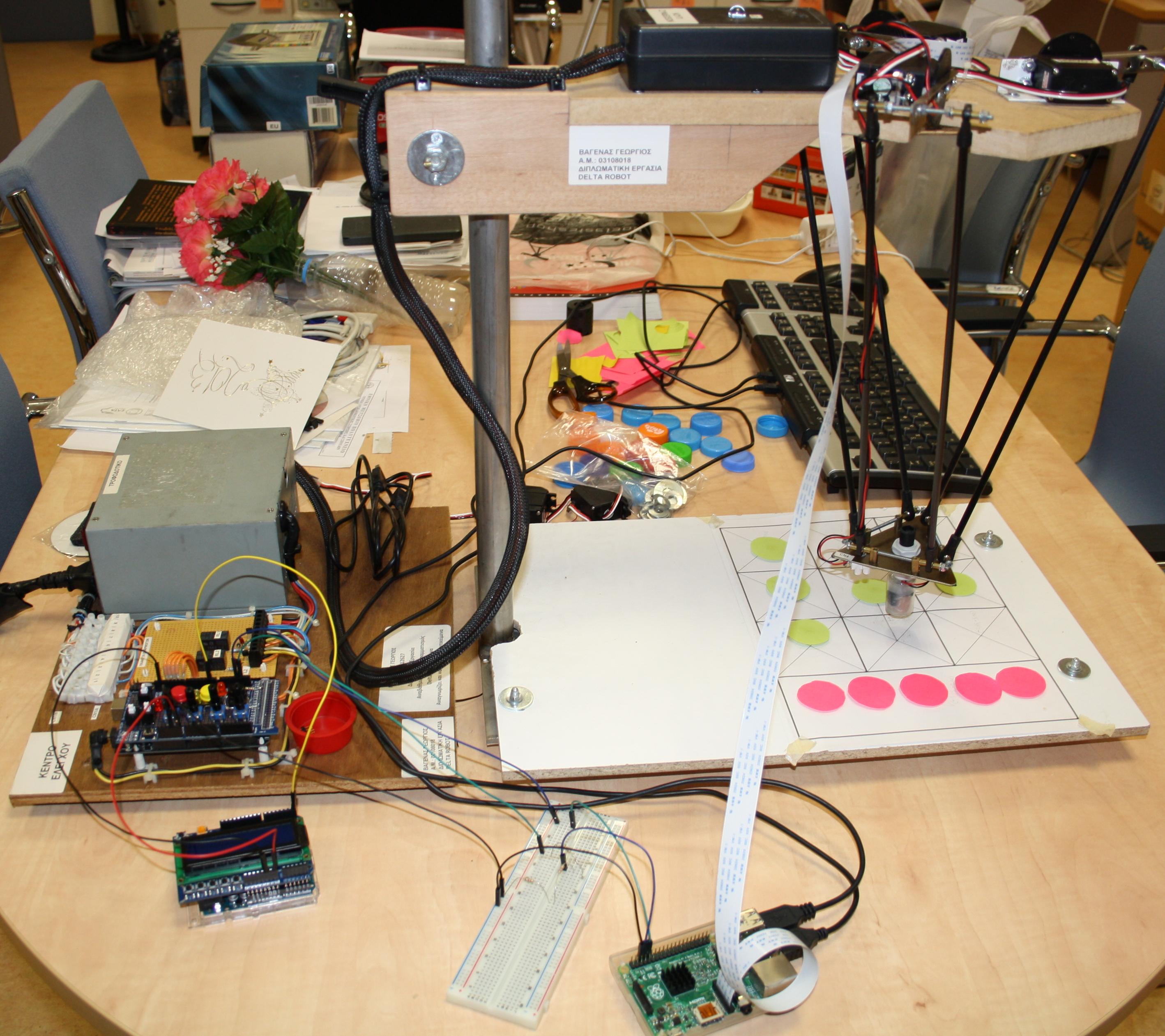
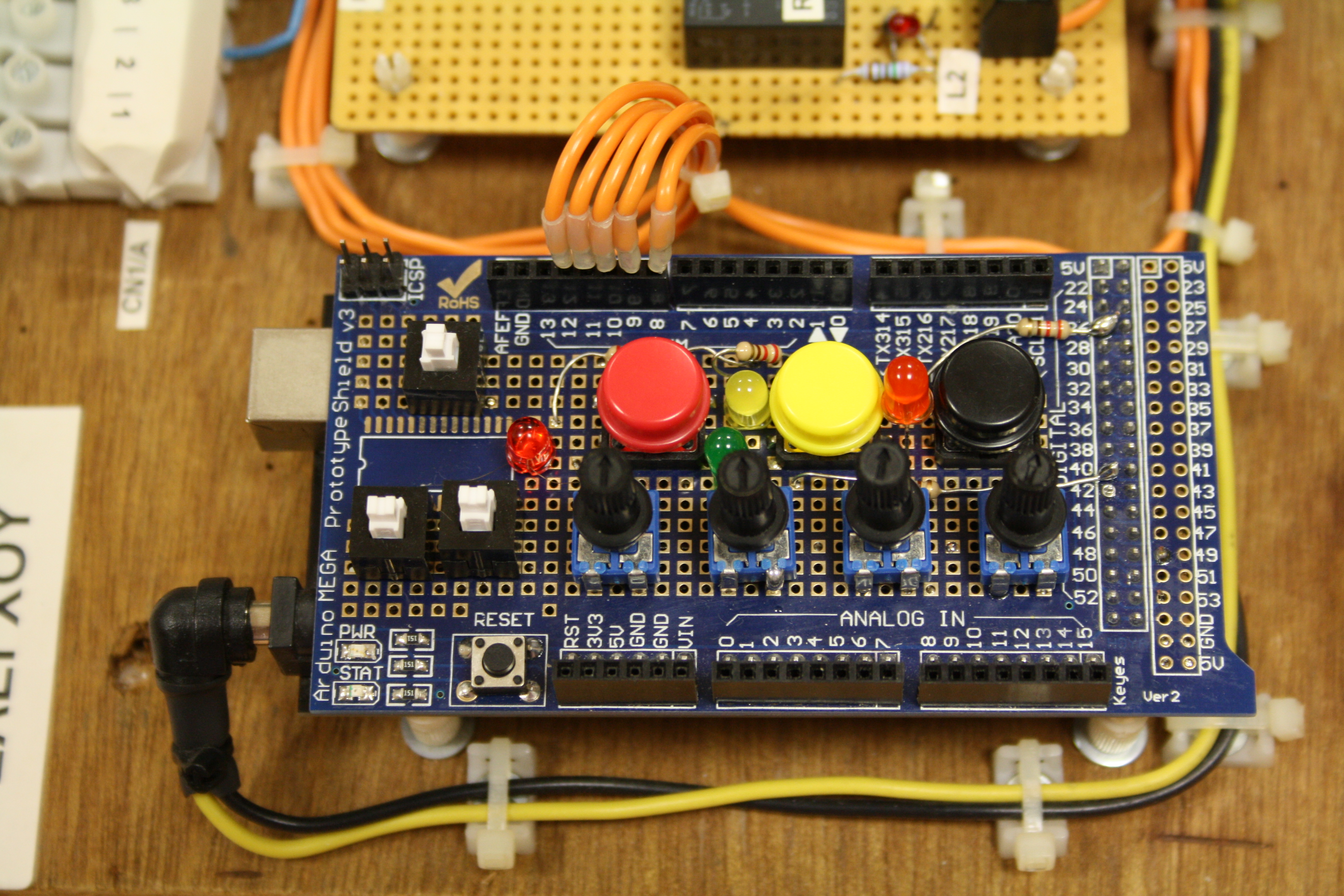
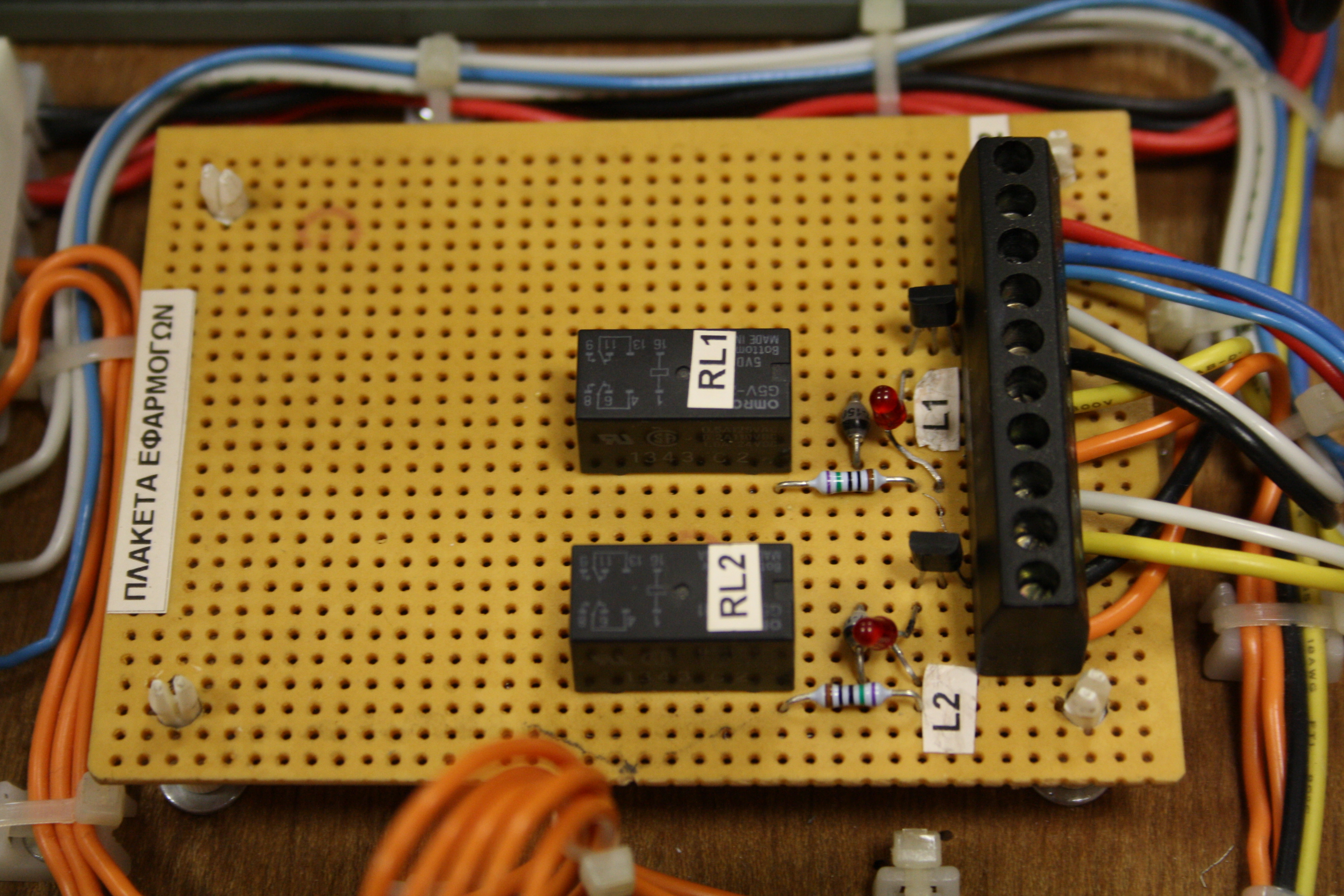
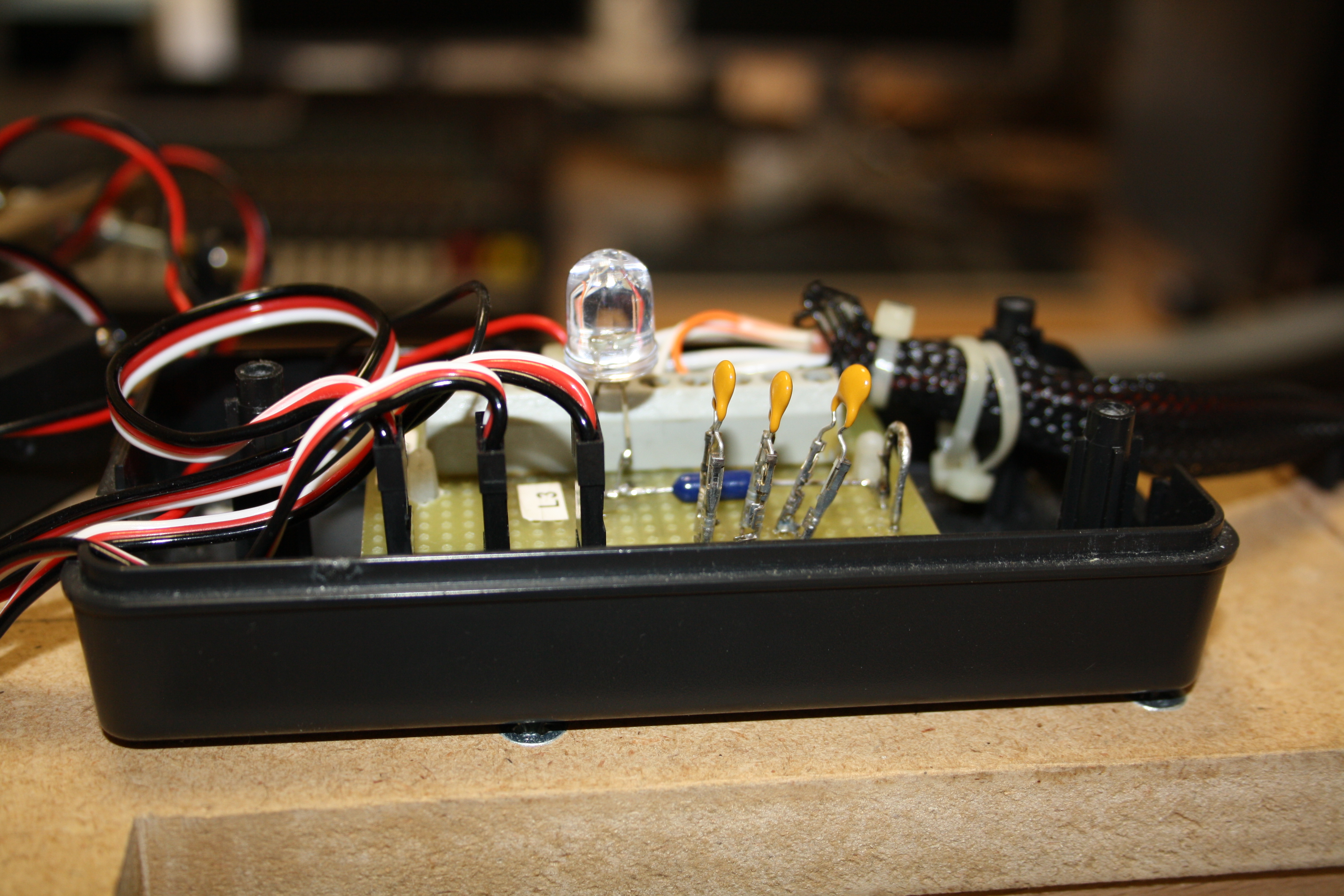
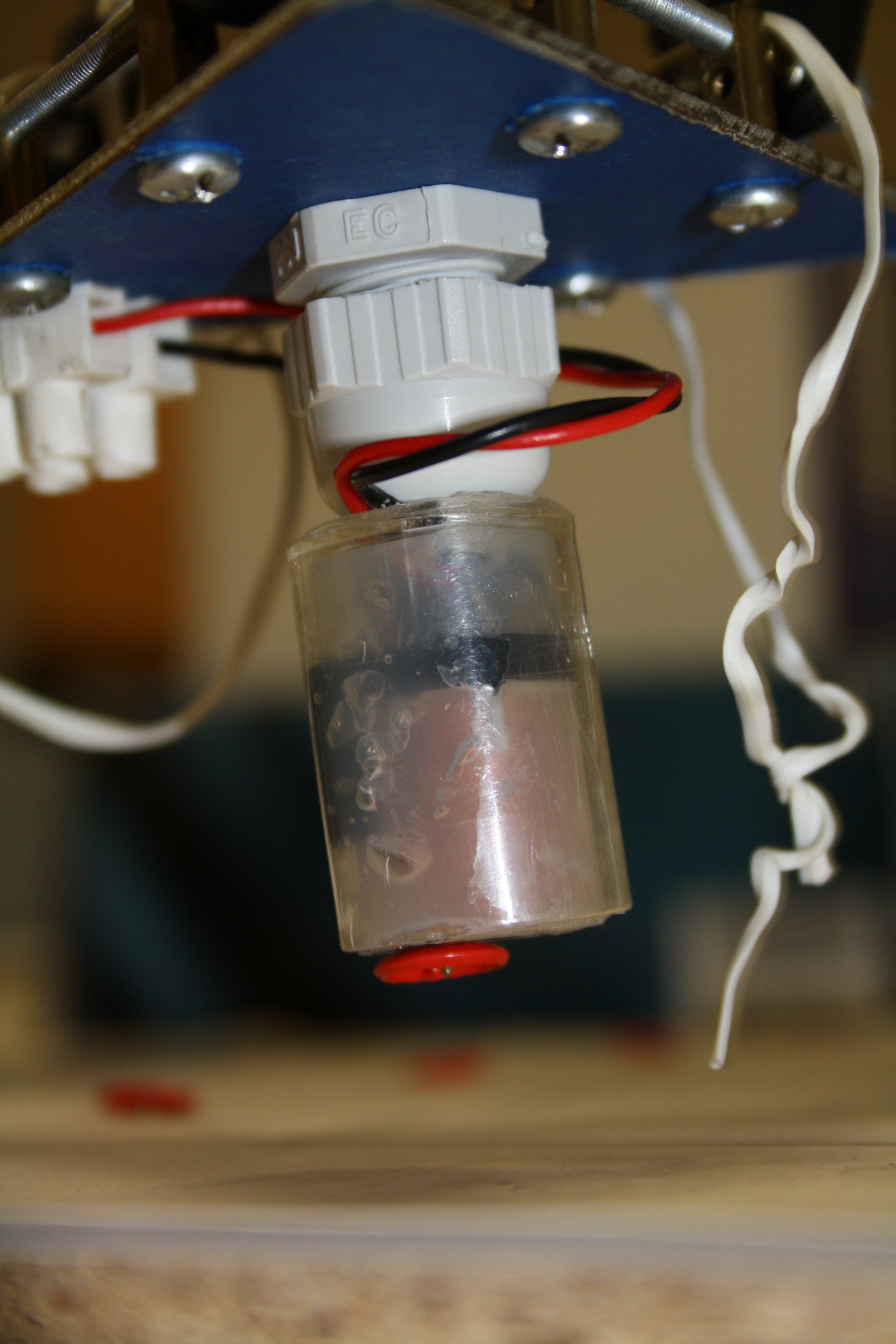


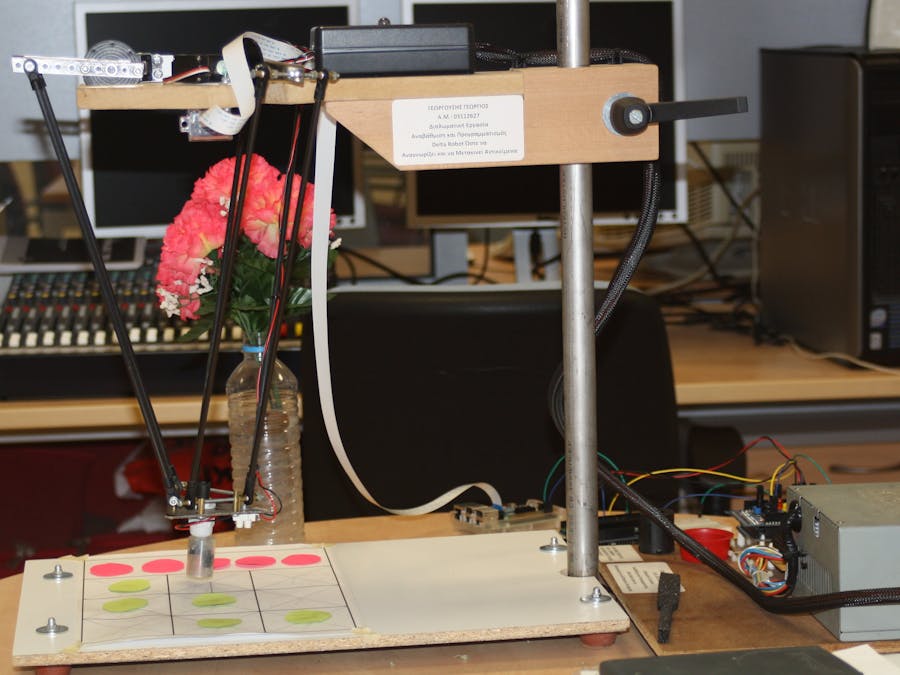
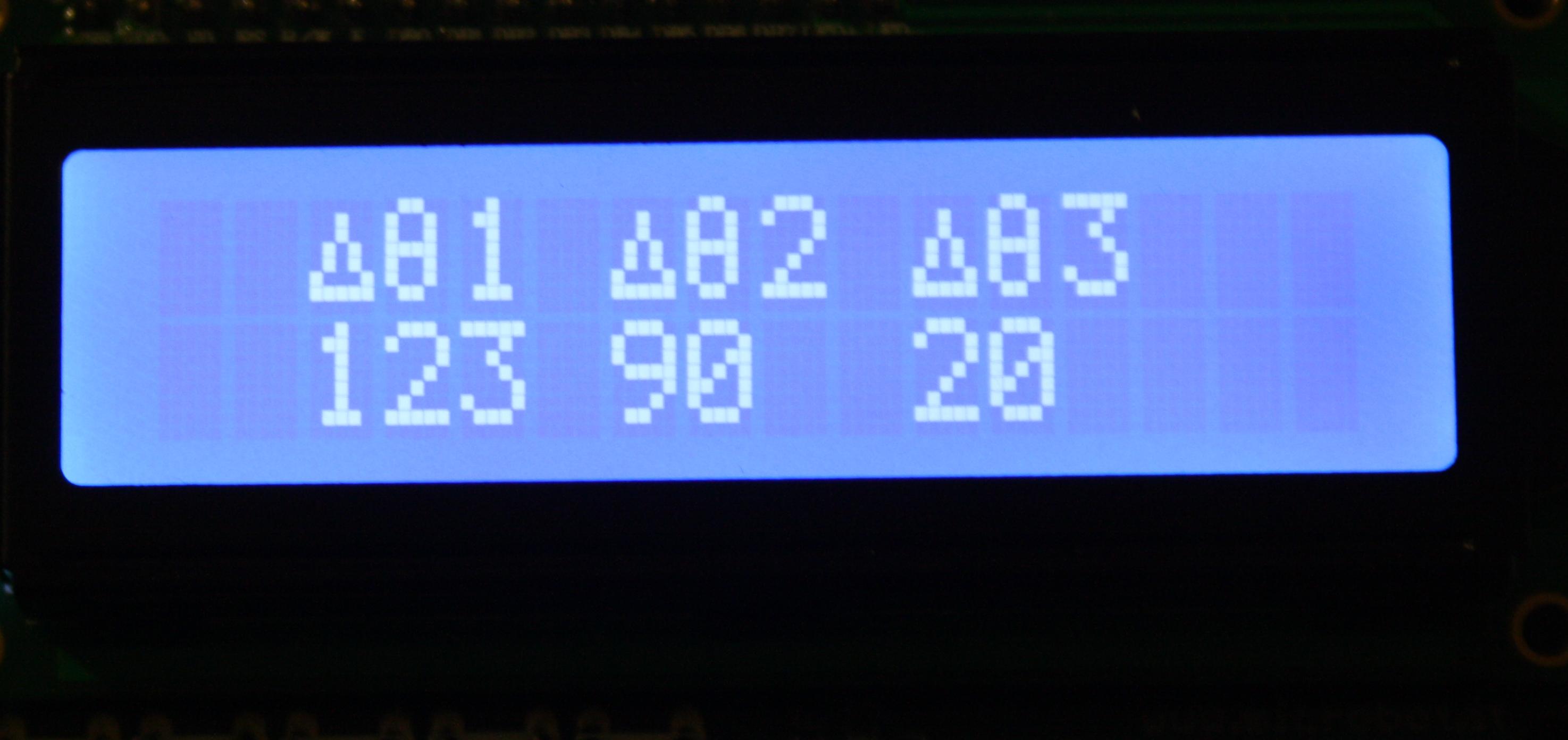



Comments
Please log in or sign up to comment.